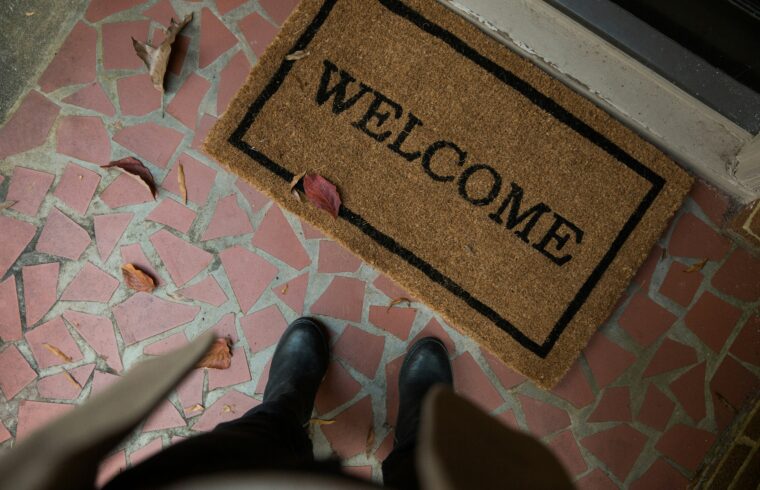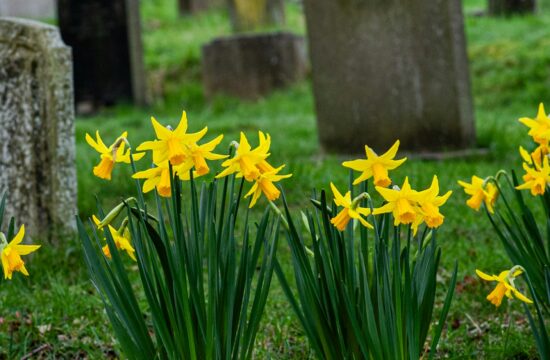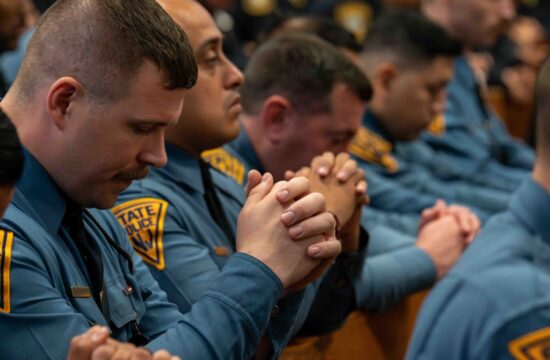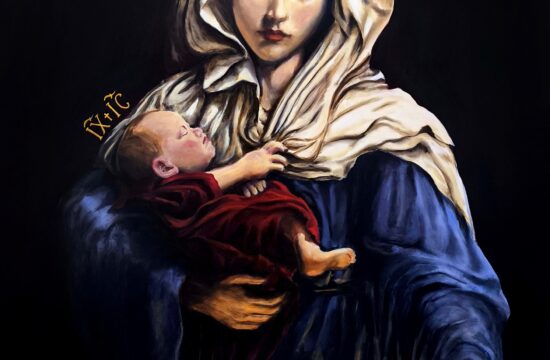Whether you’re flipping channels or scrolling news feeds, every so often you’ll catch sight of one of the most famous walls in the world. It often pops up in stories about peace talks, pilgrimages, or diplomatic visits. Maybe you’ve noticed it—the “Wailing Wall” in Jerusalem.
Even if you’ve never been there, there’s something unmistakably solemn about it. Everyone in those scenes seems to know they’re in a place that matters. You’ll see men with traditional head coverings—yarmulkes—heads bowed. There’s a hush, a reverence, an uncharacteristic silence for such a busy city. People leave handwritten prayers tucked into cracks, press close to ancient stones, sometimes with visible tears.
So what’s the big deal with this wall? Why all this seriousness?
Thank you for taking the time to read this homily for the FEAST OF THE DEDICATION OF THE BASILICA OF ST. JOHN LATERAN (November 9, 2025). Your support means a great deal to me, and I’m deeply grateful for the many who share these messages with their friends, families and social media followers. If you’ve found meaning in these words, I’d be grateful if you’d share them with others who might benefit.
And for those who prefer listening, you can find the audio version on SoundCloud HERE or subscribe to the podcast on iTunes HERE. Your comments, messages, and the way you’ve embraced these homilies continue to inspire me. Sincerely in Christ -Father Jim
Those stones are all that remains of the grand Temple of Jerusalem. For the Jewish people, that spot was—and is—the holiest place on earth, the center of faith, the very meeting place of heaven and earth. It was the one place where God’s presence—the Shekinah—rested among His people, with the Ark of the Covenant housed there. The Temple had been in the 6th century before Christ, and what was even more devastating was the loss of the Ark itself: which held the Ten Commandments, Aaron’s rod, and manna—the holy bread God fed His people in the wilderness—all gone. When the Jews returned from Babylonian exile, they rebuilt the Temple, living with this aching hope that one day the Ark would be found, that God’s presence would dwell among them again.
In 70 AD, this second Temple was destroyed by the Romans. And nearly 2,000 years later, the Jewish people still grieve—not just the loss of a building, but the loss of the last visible sign of God’s promise. That’s why it’s called the Wailing Wall: a place to mourn all that’s lost.
The first reading today comes from Ezekiel, writing centuries before Jesus. Exiles longing for home, for a Temple that was gone. The Lord gives Ezekiel this wild, beautiful vision—not just of a rebuilt Temple, but of living water pouring out from beneath its threshold, bringing life everywhere it goes. Trees lining the banks, fruit all year long, leaves that never wither—everything the water touches comes alive. Ezekiel’s pointing forward—not just to a new building, but to an entirely new kind of relationship with God.
That’s the scene: a people yearning for God to dwell among them again.
So here’s where it gets interesting for us. Today, the Church pauses for a feast that, honestly, can seem a bit odd. We’re not marking a moment from the life of Jesus—like Easter or Ascension. We’re not celebrating Peter, Paul, or Mary. We’re not even focusing on a doctrine. Instead, today we interrupt the flow of the liturgical year to remember the dedication of a church building in the middle of Rome. And not even the one most people would choose.
If you ask most people about the “big church” in Rome, they’ll think of St. Peter’s Basilica—its famous dome, vast square, built over St. Peter’s tomb. And sure, St. Peter’s is massive, legendary. But today isn’t about St. Peter’s.
Instead, it’s about the Basilica of St. John Lateran, across the city from the Vatican, less famous to tourists and confusing by name. First, there’s no such person as “St. John Lateran.” The basilica honors both St. John the Apostle and St. John the Baptist, and “Lateran” is simply the name of the wealthy Roman family who donated the land back in the 4th century. Here’s the twist: St. John Lateran—not St. Peter’s—is the cathedral of Rome itself. It’s the “mother and head of all churches in Rome and in the world.” It’s the Pope’s own cathedral.
So, why does this matter for us, living centuries and continents away? Why celebrate a building’s dedication?
Because the very fact that this building exists—and that it’s the Pope’s cathedral—means the faith survived and spread, fully out in the open. No more hidden church, no more secret prayers in underground catacombs under threat. The Church was no longer a fragile, persecuted minority—it became public. Even more amazing: this faith, once mocked and feared, made its way into the heart of the empire that killed its Founder—and outlasted it. The Lateran Basilica stands—not as a monument to marble or power, but to Jesus Christ: risen, alive, present in his Church, the one no one thought could survive but instead changed history. A Church that did what neither Ezekiel nor the Wailing Wall mourners could have imagined.
But Jesus always sees further than we do. Which brings us to today’s Gospel and the real punchline of this feast.
Jesus is in Jerusalem, standing in the Temple—the spot we now call the Wailing Wall. And he’s not quietly praying. He makes a whip, drives out merchants, flips tables, and tosses coins. If you picture Jesus as always gentle, always soft spoken—this scene shatters that. Why such intensity? Because the Temple had become something it was never meant to be: a business, a marketplace, a hollow shrine to commerce instead of worship. And then he says: “Destroy this temple, and in three days I will raise it up.”
He was talking about himself. His Body is the new temple, the truest dwelling place of God among us. But it doesn’t stop there. After his death and resurrection, Jesus sends his Holy Spirit so that every believer—and all of us together as the Church—become the place where God lives. In other words: The Temple has been rebuilt, but not in Jerusalem, not even in Rome, not in blocks of stone, but in us—living stones, gathered together in Christ. We are now the new Temple. We, together, are the living, breathing sign that God is present in the world.
This is what Paul is trying to teach the Corinthians—and us—in today’s second reading: You are God’s building. Even more: you are God’s temple. The Spirit of God now lives in you. For centuries, people mourned the loss of the sign of God’s presence. Now, in you, God restores it.
That’s breathtaking. And, honestly, a little intimidating. Paul isn’t just being poetic. The Lord who thundered from Sinai and filled the Tabernacle with cloud, who made the Temple so sacred—you are now the place he dwells. Not just an image for the catechism; it’s your reality for all of us Baptized in Christ.
So what does this mean for us, especially in a world that often feels far from sacred?
First: Christianity is not about buildings, even though the Church does beauty beautifully. God isn’t content to dwell in marble. He chooses you. Maybe you don’t feel impressive or holy enough. Maybe you’re struggling, doubting, feeling unworthy. God’s claim on you isn’t based on you being perfect. He looks at you and says, “You are my home. My Spirit in you is stronger than any army, more lasting than any stone.”
Second: There is nowhere you can go—on campus, the street, the workplace, the party—that God does not go with you. God’s presence makes every bit of your life sacred: your choices, your relationships, your very body and mind. Your life is meant to reflect a dignity that no one and nothing can take away. You are a sign to others. How would it change things if we really believed that?
Third: Jesus doesn’t just want Sunday mornings or the “holy” corners of your life. He comes to confront the clutter—the habits, the resentments, the distractions we tolerate. He flips tables; he cleans house. Not to shame us, but because he loves us enough to want more. Maybe there’s a corner of your heart you keep hidden. Or maybe you avoid his gaze because you’re afraid. His “zeal” isn’t anger—it’s mercy. He fights for you, to pull you back into the life he died and rose to give you.
And Ezekiel’s vision? Water pours out of the Temple, turning deserts to gardens, bringing life and healing wherever it flows. That prophecy is fulfilled in us. When God’s Spirit dwells in you, you become a channel for that living water—reaching dry and hurting places in yourself and in the world. This isn’t about being insulated or superior. God’s love flows through you so that lives can change.
Maybe that sounds overwhelming. Maybe you’re thinking, “That can’t be true for me. I’m a mess. I screw up. I get lost.” That’s exactly who God calls. Again and again, God transforms what’s broken. He took a persecuted, fearful Church and built it into something no one saw coming. He took the cross, the ultimate sign of defeat, and made it the sign of his victory. He takes you, as you are, and says, “I am with you. I want to dwell with you. I want to make something beautiful.”
So on this feast, as we reflect on ancient stones and beautiful basilicas, don’t miss what God is building right here, right now. The Lateran is remarkable, but the real miracle is you: you are God’s temple. His Spirit abides here—flesh and blood, weakness and hope. God’s Church is not being built from rock, but from hearts that open up to Him.
Let’s ask for the courage to let him in, to let him clean house, and to let his life flow through us. Let’s ask him to fill even the cracks in our hearts with living water. This week, ask yourself: Where do I need Jesus to flip some tables? Where does living water need to flow?
And then watch—even in the most ordinary days and places—as God brings life out of dry ground, fruit from barren places, faith out of what once was doubt. Let’s become living basilicas—so alive with the presence of God that others can’t help but wonder, “Surely, God is in this place.”











